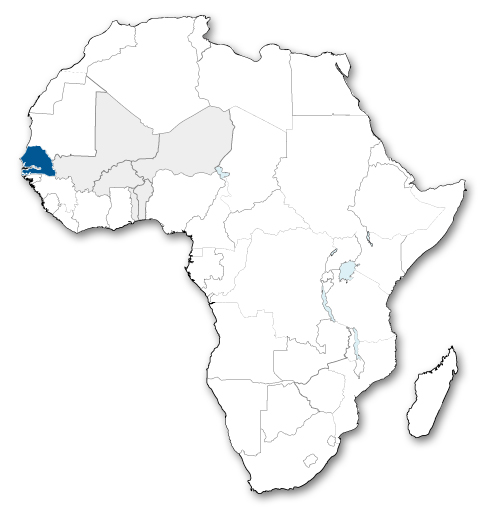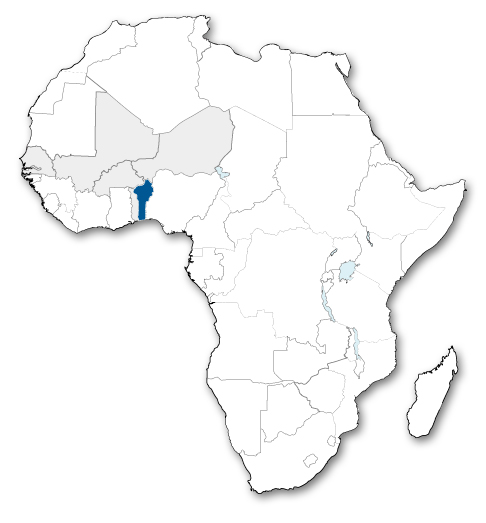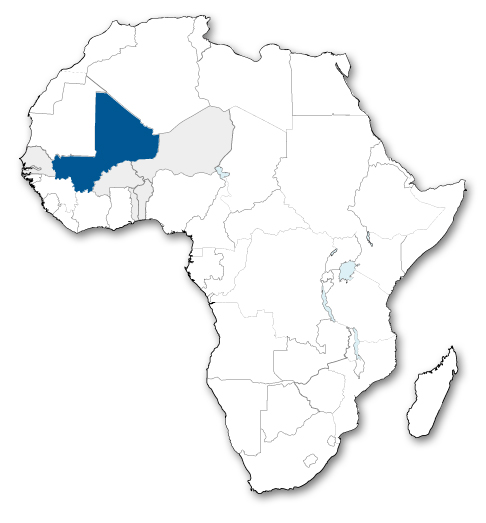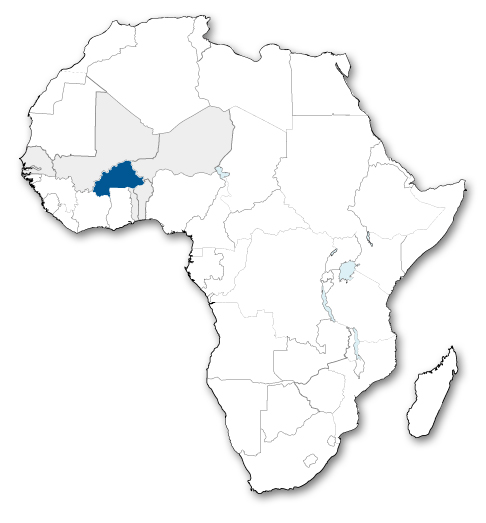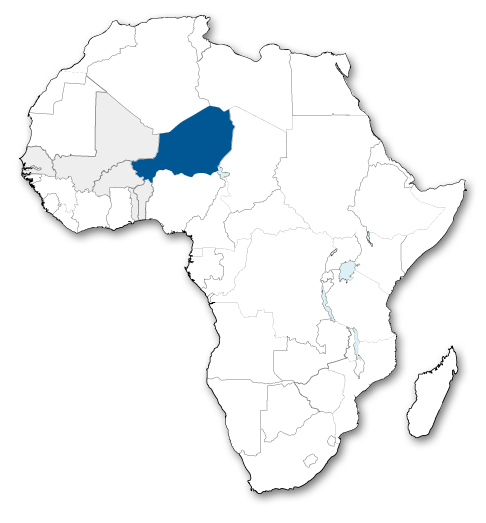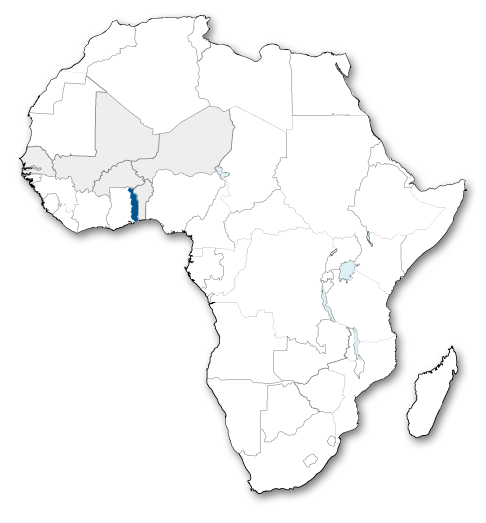
• Area : 197,000 km2
• Capital : Dakar
• Population : 11.9 million inh.
• Area : 115,000 km2
• Capital : Cotonou
• Population : 7 million inh.
• Area: 274,000 km2
• Capital: Ouagadougou
• Population: 15.7 million inh.
• Area: 1,267,000 km2
• Capital: Niamey
• Population: 15.2 million inh.
• Area: 1,241,000 km2
• Capital: Bamako
• Population: 12.7 million inh.
• Area : 57,000 km2
• Capital : Lomé
• Population : 5.5 million inh.
Results of action taken
Winds of Hope has developed close ties with the political and health authorities in the countries to which it is committed, as well as with the coordinators of each of the national programs and the NGOs active in the field. Its partnership with WHO / AFRO and the Ministries of Health and its relationship with the associations in the NoNoma Federation enabled concrete campaigns to be launched, with technical supervision, that have had a direct impact on the fate of entire populations .
Between 2000 and 2012, WHO / AFRO received total funding of CHF 2,446,000 from Winds of Hope for the funding of the Regional Programme for Fighting Noma, and NGOs a total of CHF 2,294,000 to support their noma-prevention programs.
As we are talking about preventative work, it is of course not possible directly to quantify the number of children saved, but in areas where national programs are running and NGOs are active in the field, we can already see an increase in the number of cases detected early enough to be cured.
Winds of Hope’s action has enabled the following results to be achieved:
- The launch of national programs against noma that had never previously been able to start, for lack of funding. This represented a great leap forward, since nobody had hitherto financed the implementation of prevention programs in direct collaboration with the health authorities.
- The number of African countries actively fighting noma has grown. Thanks to support from Winds of Hope, 6 countries have benefited so far from a national program to fight noma. Two new countries have applied for support.
- Training of health workers in the prevention and early detection of noma. The main goal pursued by Winds of Hope is to have a health worker in each village capable of preventing and detecting noma. Niger, the first country to benefit from the Foundation’s support, already to date has more than 8,000 trained health workers.
- Training of health staff. In addition to the local health workers, midwives and nurses, traditional healers and dentists also participate in workshops and refresher courses on noma in each of the countries supported by Winds of Hope.
- Better educated and more aware communities. Taking an interest in noma also means focusing on the poorest people, educating them and teaching them basic hygiene. Thanks to the WHO’s Information, Education and Communication (IEC) program, which is supported by the Foundation, the disease is becoming better known and children are more often brought to health centers rather than being hidden away in village huts. We can conclude that in some regions, the population now knows about noma and how to detect it early enough to be cured. This raised level of awareness is particularly evident amongst village chiefs, teachers and mothers.
- Co-operation and synergy between the organizations active in the field. The programming of numerous training and consultation sessions has enabled the various people active in the field to improve the coordination of their activities, and thus their impact.
- The creation of the International NoNoma Federation. In March 2003, the NoNoma Federation emerged under the leadership of the Winds of Hope Foundation. The federation brings together some thirty European, African and American NGOs working in Africa, and constitutes an additional force for action.
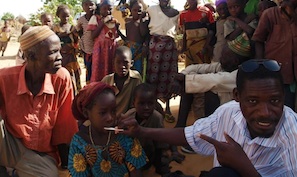
Niger
From 2000 to 2012, the NPFN received funding totaling CHF 625,000 from Winds of Hope and NGOs a total of CHF 776,000.
Before the national program became operational, Winds of Hope funded various activities to fight Noma: a project under the responsibility of the NGO Antenna Technologies for producing spirulina to combat malnutrition; and prevention and early detection campaigns implemented by the Sentinelles (Switzerland), Hilfsaktion Noma (Germany) and Campaner (Spain) humanitarian organizations.
At the end of 2010, thanks to the joint action of the NPFN and NGOs:
• 8,010 health workers had been trained in the prevention and early detection of noma
• 181,092 others in the population had been made aware of how to recognize of the disease,
• 5,690 children had been admitted to NGO centers and received treatment,
• 847 cases of noma had been detected, of which 744 were surgically treated in Niger and 87 in Europe,
• 312 children had received help with social reintegration.
In 2011, the implementation of activities included in the noma plan achieved results in:
• Reinforcing and developing skills and knowledge:
o the training of 150 health workers in the regions of Maradi and Tillaberi
o post-training supervision for some of the workers in these same two regions
o the training of 200 traditional healers in Maradi and Tahoua regions
o the training of 200 women as mediators and birth attendants in Maradi and Tahoua regions
o Training of 75 people responsible for basic education in the Tahoua region
• Early detection and medical treatment:
o 764 children were screened, including 9 cases of noma in the initial phase, in 12 CRENIs (intensive nutritional rehabilitation centers) selected in four regions: Maradi, Tahoua, Tillaberi and Zinder.
• Awareness-raising and social mobilization:
o 15 broadcasting contracts have been signed with public and private radios at Agadez, Diffa, Dosso, Maradi, Niamey, Tahoua and Tillaberi.
o 11 interactive discussions were arranged to enable the people of Dosso, Maradi, Niamey, Tahoua and Tillaberi to ask questions live on air and get answers from appropriate health professionals on oral diseases and noma.
o 14 awareness-raising events (plays, mobile cinema) in villages, at water points, and in markets and other public places reached 2,965 persons.
• Training and educational materials:
o 1,000 posters on food groups and the fight against noma were designed, reproduced and made available to health facilities.
o 2,000 leaflets on noma and the activities of the NPFN and NGOs were designed, reproduced and made available to health facilities.
To complement the efforts of the National Program to fight noma in Niger and reinforce its effects, Sentinelles launched an intensive campaign in 2004 for information dissemination, prevention, awareness-raising and early detection of noma, whose main objective was to target staff at healthcare facilities. It concluded in February 2010 with 123 people (health workers and birth attendants) having been trained.
From March 2010 onwards, thanks to support from Winds of Hope, a second wave of awareness-raising was launched, this time targeting the tribal community (figures of authority – customary, traditional, religious and moral) and the village population. Gingivitis consultations were also offered to village populations, and - practical conditions and weather permitting - an informative film was projected after nightfall to the entire community.
Through this program, 5'610 people in the targeted groups were made aware of the disease, mainly in the departments of Mirriah and Magaria in the Zinder region, as well as in the urban community. In addition, about 4,100 villagers were present at these sessions and four schools benefited from awareness-raising within their institutions. During the awareness-raising sessions in villages and neighborhoods, 902 children suffering from gingivitis, 3 children with noma, and 8 with cleft lips were detected. Thirteen screenings of the awareness-raising film were organized, with the participation of about 5,300 villagers. These enabled 88 children suffering from gingivitis, 2 children with noma and 2 with cleft lips to be identified.
In order to provide individually tailored monitoring of the medical, nutritional, social and family circumstances of each child at their various places of residence in the bush, which are particularly difficult of access, rugged four-wheel drive vehicles are essential. Three of these enabled a total of 1070 bush visits to be carried out during 2010.
In that year, 654 children and adolescents in Niger were rescued: 323 children with noma, 329 children with hare-lip, and 2 homeless, abandoned children.
A two-person mission from the Physionoma association went to Zinder during the summer of 2010, over a period of six weeks. This enabled 20 children to be monitored, and complementary training to be given to the local staff who use rehabilitation techniques with children every day.
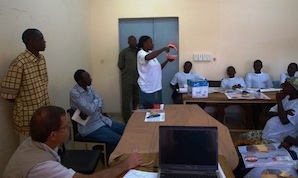
Burkina Faso
From 2004 to 2012, the NPFN received funding totalling CHF From 2004 to 2012, the NPFN received funding totalling CHF 229,000 from Winds of Hope and NGOs a total of CHF 749,000.229,000 from Winds of Hope and NGOs a total of CHF 749,000.
In 2002, before the National Program against noma was extended to this country, the Hymne aux Enfants Foundation (Switzerland) received a grant from Winds of Hope for its awareness-raising and screening work in the field, as well as for the construction of a new center for children at Ouahigouya. The Foundation also launched a project for the production of spirulina to fight malnutrition. This came under the responsibility of the NGO Antenna Technologies (Switzerland), which also received support.
By the end of 2010, thanks to the action of the NPFN:
• 2,106 health workers had been trained in the prevention and early detection of noma.
In 2011, the implementation of activities included in the noma plan achieved results in:
• Reinforcement and development of skills and knowledge:
o no action, because Winds of Hope blocked funding, following the ban by the Ministry of Health on community health workers opening children’s mouths as part of their preventative work.
• Early detection and medical treatment:
o The CSPSs in the mid-west region were equipped with consumables and medicines for the treatment of gingivitis and mouth ulcers in malnourished children.
• Awareness-raising and social mobilization:
o A workshop was organized to design and validate educational messages about oral health and noma.
• Training and education materials:
o This workshop resulted in the development of: three posters on noma, tooth decay and gum disease; three pamphlets on the national oral health program, dental disease and noma; one box of pictures depicting noma and oral diseases; one file of advocacy materials.
In 2010, 928 children spent time at the Sentinelles center in Ouagadougou and 328 children were screened for gingivitis during the year. 130 children and adolescents were rescued: 115 suffering from noma, of which 9 were HIV positive, and 15 were suffering from other afflictions.
Two surgical field missions were carried out, one in collaboration with Professor Jean-Marie Servant’s team (Médecins du Monde, Paris), the other directed by Professor Brigitte Pittet of the Geneva University Hospitals, in collaboration with AEMV (Association d’Entraide des Mutilés du Visage – Association for helping facially disfigured people). 22 children affected by Noma were surgically treated, 37 children with harelips and 4 children with other conditions.
Four children displaying sequelae from noma that could not be operated on in Africa were transferred to Switzerland for surgery.
Thanks to the impact made by Noma Day, several projects were made possible:
Between 2008 and 2011, a rural health and prevention program was implemented by A Better Life Foundation in the Gourma region in the east of the country. Apart from raising awareness in poor rural communities, this project trained 31 nurses to run local outposts and 66 community health workers. Over 1’400 people received treatment and several were referred for surgery.
Between 2009 and 2012, a series of noma meetings was organised in the northern Ouahigouya region of the country by the Persis-Burkina association and the radio station La Voix du Paysan. They went around the villages organising theatrical performances and radio discussions in the local language, in which a medical team and actors invited the local people to join the fight against noma. Another aim was to identify noma cases and refer them to the ad-hoc centers.
In 2009 and 2011, the Sentinelles Foundation led a health worker training program, in collaboration with the national program for the fight against noma in the 5 districts of the central western region: Nanoro, Koudougou, Reo, Sapouy et Leo. This program incorporated traditional practitioners into the training that was delivered.
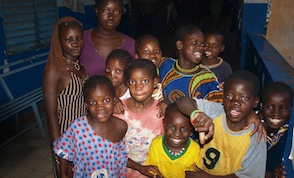
Mali
From 2004 to 2012, the NPFN received total funding from Winds of Hope of CHF 205,000, and the NGOs a total of CHF 241,000.
By the end of 2006, 540 people (regional trainers and nurses heading medical outposts) had been trained thanks to activities in the NPFN.
In 2011, implementation of activities contained in the noma plan resulted in:
• Re-inforcement and development of skills and knowledge:
o 2 dental surgeons, 4 general practitioners, 4 specialist dental technicians and 16 health technicians from Mopti, Timbuktu, Gao and Kidalwere trained to detect cases oral infections and noma, and give initial treatment.
• Early detection and medical treatment of cases:
o Campaigns to monitor and screen for oral infections and noma were carried out by agents trained to treat these complaints in the regions of Mopti, Segou and Sikasso.
o One of these acts of monitoring carried out by a trained agent led to the detection of a fresh noma case and two victims with sequelae at Bankass in the Mopti region. These patients were then treated at Ouahigouya in Burkina by surgeons from Enfants du Noma.
• Awareness-raising and social mobilisation:
o Awareness-raising messages translated into seven languages (French, Bambara, Peulh, Bozo, Dogon, Sonrhaï and Tamasheq), were created and broadcast by local radios. However, three northern regions could not receive the broadcasts because of the difficult political situation
o Screening campaigns were undertaken in schools in the Badiangara, Koro and Bankass districts
• Educational and training materials
o An audio cassette of the awareness-raising messages was produced in the different languages
Thanks to the impact made by Noma Day, several projects were made possible:
From 2008 to 2011, the Au Fil de la Vie association implemented a program of community awareness-raising and training of health workers in the Kayes region. This resulted in the raising of awareness of 10,000 people and the staff of 46 health centers, the mobilisation of local points of contact and the distribution of spirulina to combat malnutrition in small children. Five fresh cases of noma were discovered during this mission.
From 2008 to 2011, the Idées’Elles and Prométhée associations organised a program of training for traditional birth attendants in Mopti and Bandiagara region (84 villages with 50,000 inhabitants). This resulted in the training of 164 traditional birth attendants, who used their new skills to monitor pregnancies, deliveries and breast-feeding so as to make mothers aware of the rules of hygiene and nutrition, as well as the risks of noma.
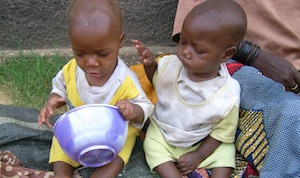
Benin
From 2004 to 2012, the NPFN received total funding from Winds of Hope of CHF 340,000, and one NGO a total of CHF 8,000.
At the end of 2010, thanks to activities in the NPFN:
• 1,049 health workers had been trained to prevent and detect noma at an early stage,
• 50 schools and et 300 mothers of children aged up to 6 were made aware of how to recognise the disease,
• 39 cases of noma were detected, 28 of which were at the sequelae stage.
In 2011, implementation of activities contained in the noma plan resulted in:
• Re-inforcement and development of skills and knowledge:
o 80 chief medical officers and health area coordinators together with 120 community points of contact and 60 teachers from the Atacora-Donga, Borgou-Alibori, Mono-Couffo and Zou-Collines areas, were trained in screening and early treatment of noma cases .
o 200 members of 30 women’s associations in the Atacora-Donga, Borgou-Alibori, Mono-Couffo and Zou-Collines areas, were trained in the prevention of noma and oral infections.
o 200 health workers (nurses, midwives, social workers) from 8 districts were trained in screening and early treatment of noma cases.
o 200 paramedical points of contact in 8 districts were trained in how to refer and transfer noma cases to the ad-hoc centers
• Early detection and medical treatment of cases:
o 450 patients - men, women, adolescents, children and the elderly – were treated during medical tours to screen and treat cases of noma and oral infection in the Atacora-Donga, Borgou-Alibori, Mono-Couffo and Zou-Collines areas.
• Awareness-raising and social mobilisation:
o Writing, production, recording and broadcast of an awareness-raising publicity spot in the campaign for education about oral hygiene and noma prevention. This was broadcast on the national television channel ORTB and on local radio stations such as Radio Urban FM in Parakou, Radio Solidarité in Djougou, Radio Nato in Natitingou, and Radio Lokossa, Radio Kandi FM and Radio Carrefour in Bohicon.
o Production of 2 noma awareness-raising programs on national television channels and six programs on local radio in the Atacora-Donga, Borgou-Alibori, Mono-Couffo and Zou-Collines area. These attracted a large audience throughout the country resulting in better awareness of the causes and clinical symptoms and, above all, how to prevent this disease.
• Educational and training materials :
o Reproduction of manuals, booklets, leaflets and boxes of pictures about noma and oral infections, to embed the knowledge acquired during training sessions and so have a good knowledge of the risk factors, as well as the habits that can help counteract this disease.
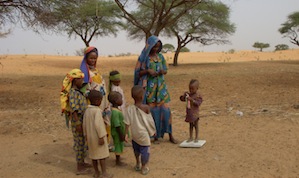
Togo
From 2007 to 2012, the NPFN received total funding from Winds of Hope of CHF 165,000.
At the end of 2010, thanks to activities in the NPFN:
• 150 community health workers were trained in prevention, early detection and correct treatment of noma in the Savanes, Kara and Central regions,
• 100 regional trainers were prepared for the job of training health workers,
• 60 radio broadcasts and 6 television programs on noma were produced in 30 different districts,
• 54 cases of noma were detected, of which 9 were surgically treated.
In 2011, implementation of activities contained in the noma plan resulted in:
• Re-inforcement and development of skills and knowledge:
o 60 health workers in the Plateau region and 35 in the Maritime region were trained in prevention, early detection and correct treatment of noma.
o The performance of 26 health workers in 12 districts of the Kara and Savanes regions was evaluated, two years after their initial training.
• Early detection and medical treatment of cases:
o 22 suspected noma cases were detected during an active screening campaign organised on the occasion of the National Vaccination Days. Amongst these, there were two cases of developing noma in the districts of Tone and Hahoand and 3 cases of noma at the sequelae stage, operated on in the Mercy Ship floating hospital.
o 33 children aged 3 to 6 were examined during screening and treatment sessions in 8 nutritional rehabilitation centers in the Savanes region, of which 26 presented with at least gingivitis and were given treatment.
• Awareness-raising and social mobilisation:
o 100 radio broadcasts and 8 television programs were organised, as well as various educational talks. These all contributed to better awareness in the population about noma and its consequences.
• Educational and training materials:
o Revision of training documentation for the prevention and correct treatment of noma (reference manual, student’s training card, training log, guide for trainers) taking into account the latest directives concerning the fight against malnutrition, including the modifications linked to the new WHO standards concerning growth and development of babies and small children.
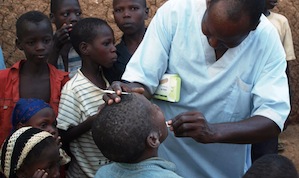
Senegal
From 2007 to 2012, the NPFN received total funding from Winds of Hope of CHF 228,000.
At the end of 2010, thanks to activities in the NPFN:
• 105 cases of noma had been detected.
In 2011, implementation of activities contained in the noma plan resulted in:
• Reinforcement and development of skills and knowledge:
o 120 chief nurses of health centers, other nurses and midwives in the health districts of Kébémer, Darou Mousty, Louga, Darha and Linguère, were trained in screening for cases of noma and administering initial treatment.
o 120 health workers and community points of contact, birth attendants and traditional practitioners were trained in the prevention of noma and oral infections as well as how to notify and refer noma cases to ad-hoc centers.
o 20 dental surgeons and senior dental technicians were trained in monitoring and preventing oral diseases, particularly noma.
• Early detection and medical treatment of cases:
o 58 children displaying risk factors such as malnutrition, poor hygiene and absence of vaccination were identified at the Thiolome Fall health center and 48 children in Ndande, during screening sessions organised in the Kebemer health district.
• Awareness-raising and social mobilisation:
o 33 teachers, 28 Koranic instructors and 100 mothers received instruction in prevention and recognition of the symptoms of noma in the Kebemer health district.
Guinea-Bissau
In 2009, one NGO received total funding from Winds of Hope of CHF 61,000.
R.D. of Congo
In 2012, one NGO received total funding from Winds of Hope of CHF 37,000.






